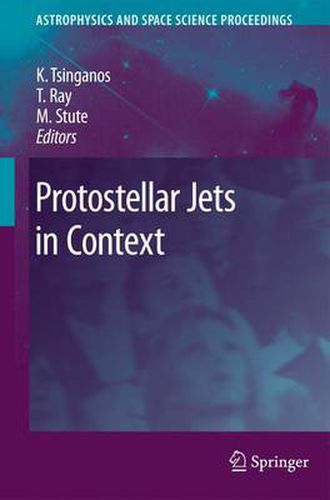Readings Newsletter
Become a Readings Member to make your shopping experience even easier.
Sign in or sign up for free!
You’re not far away from qualifying for FREE standard shipping within Australia
You’ve qualified for FREE standard shipping within Australia
The cart is loading…






This title is printed to order. This book may have been self-published. If so, we cannot guarantee the quality of the content. In the main most books will have gone through the editing process however some may not. We therefore suggest that you be aware of this before ordering this book. If in doubt check either the author or publisher’s details as we are unable to accept any returns unless they are faulty. Please contact us if you have any questions.
It is over a quarter of a century since the discovery of out?ows from young stars. The intervening years have led to remarkable advances in our understanding of this phenomenon. Much of the progress can be attributed to advances in facilities and technologies, including not only larger telescopes but also improved instrument and detector performance. In addition protostellar out?ows have now been imaged from the ground and space at high spatial resolution, e. g. with HST, and at a wide - riety of wavelengths from X-rays to radio waves, revealing more and more about their physics. This veritable revolution in observation has been accompanied by an exponential growth in our ability to numerically simulate the launching and pro- gation of jets. Codes continue to improve: they now incorporate more physics and are increasingly ef?cient through, for example, techniques such as adaptive mesh re?nement and the use of parallel processing in cluster environments. Simulating the launching and propagation of a jet all the way from the vicinity of the star up to 4 several thousand AU (a size range of10 ) is now much closer. In more recent times, developments in observation, theory and numerical s- ulation have been joined by laboratory jet experiments reproducing, on centimetre scales, that which is seen in astrophysics to stretch for several parsecs.
$9.00 standard shipping within Australia
FREE standard shipping within Australia for orders over $100.00
Express & International shipping calculated at checkout
This title is printed to order. This book may have been self-published. If so, we cannot guarantee the quality of the content. In the main most books will have gone through the editing process however some may not. We therefore suggest that you be aware of this before ordering this book. If in doubt check either the author or publisher’s details as we are unable to accept any returns unless they are faulty. Please contact us if you have any questions.
It is over a quarter of a century since the discovery of out?ows from young stars. The intervening years have led to remarkable advances in our understanding of this phenomenon. Much of the progress can be attributed to advances in facilities and technologies, including not only larger telescopes but also improved instrument and detector performance. In addition protostellar out?ows have now been imaged from the ground and space at high spatial resolution, e. g. with HST, and at a wide - riety of wavelengths from X-rays to radio waves, revealing more and more about their physics. This veritable revolution in observation has been accompanied by an exponential growth in our ability to numerically simulate the launching and pro- gation of jets. Codes continue to improve: they now incorporate more physics and are increasingly ef?cient through, for example, techniques such as adaptive mesh re?nement and the use of parallel processing in cluster environments. Simulating the launching and propagation of a jet all the way from the vicinity of the star up to 4 several thousand AU (a size range of10 ) is now much closer. In more recent times, developments in observation, theory and numerical s- ulation have been joined by laboratory jet experiments reproducing, on centimetre scales, that which is seen in astrophysics to stretch for several parsecs.